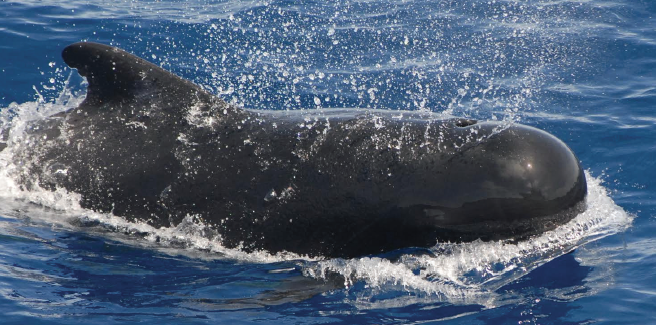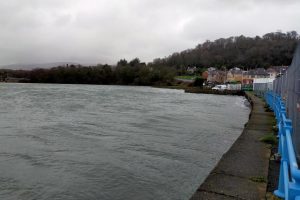 A SERIES of unusual whale sightings caught the attention of scientists at marine mammal research facility, Sea Watch Foundation, this past week.
A SERIES of unusual whale sightings caught the attention of scientists at marine mammal research facility, Sea Watch Foundation, this past week.
Members of the public are encouraged by the organisation to report any sightings of dolphins, porpoises and whales across the UK. This usually leads to patterns of species being found in areas where they are expected, but there are occasionally exceptions to the rule, thanks to the nature of water-bound species. The recent sightings around Wales serve as an example of that.
The long-finned pilot whale is the species in question, well known due to the exploitation of the mammals during organised drives in the Faroe Islands. These ‘subsidence’ hunts take place annually, and many activists would like to see an end to them. Pilot whales observed in the Faroes may travel along the shelf edge to waters west of the British Isles and beyond, radio-tracking studies have shown.
Despite the fact that there are past records of pilot whales spotted around Wales, it remains an rather unusual occurrence, especially with sightings taking place at four different locations on four separate occasions.
The first sighting was made in the Central Irish Sea, 47 miles out from Aberdyfi in Gwynedd. On August 17, five pilot whales were spotted at this location by Charlie Bartlett, who has been venturing out to sea for 45 years. On Sunday, August 21, the second sighting was made off Eynon Point, Swansea, where a lone pilot whale was reported. On that very same day, a third sighting was reported. Two days later, near between Southerndown and Ogmore-by-Sea in Glamorgan, the final sighting was made. This time, eight animals were spotted by Sea Watch volunteer Keith Burgess. Keith couldn’t be certain of what he was watching at the time of the sighting (11am, Tuesday, August 23). The Sea Watch Foundation team discussed the matter, becoming confident that the animals were indeed long-finned pilot whales.
With so many similar reports from the same time – two of which have been verified – it is certainly plausible that a pod of these whales is moving around the Welsh coast at the moment.
Sightings Officer for Sea Watch Foundation, Kathy James, said: “We’d love people to get out there to look for these enigmatic whales and report any sightings to us. We encourage these ‘casual sightings’ through our website and also welcome people to take part in dedicated watches for whales, dolphins and porpoises around our coast.”
Dr Peter Evans, Director of Sea Watch Foundation, said: “Long-finned pilot whales typically live in large groups in deep waters beyond the edge of the continental shelf. Here they feed largely upon oceanic squid. However, occasionally they come into shelf waters around the British Isles from the Atlantic, either in pursuit of squid or shoaling fish. It is likely that an abundance of a particular prey species brought them into Welsh coastal waters on this occasion.”
How to monitor whales around Wales:
- Report your sightings at www.seawatchfoundation.org.uk/sightingsform.
- Stage a dedicated watch at www.seawatchfoundation.org.uk/recording-and-submitting-sightings.
- Get in touch! Email kathy.james@seawatchfoundation. org.uk.
Long-finned pilot whale facts:
- Length: Adult females are 4-5.5m. Males grow to 5.5- 6m in length.
- Head: Bulbous head, short, almost imperceptible, beak.
- Fins and coloration: A dark back, a low-swept back fin and long flippers.
- Lifespan: Around 50 years
- Diet: Pilot whales seem to feed exclusively on Todarodes (a genera of cephalopods) whereever possible, but if it is unavailable, the diet is supplemented with a range of other prey items including fish and shrimps. In winter, prey species diversity increases whereas fish become more important in summer, especially in the diet of males, although squid still continue to make up the bulk of the food.
















Add Comment